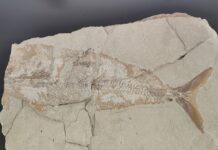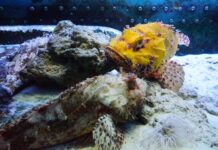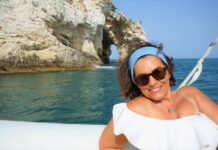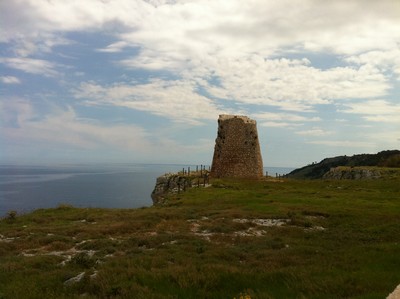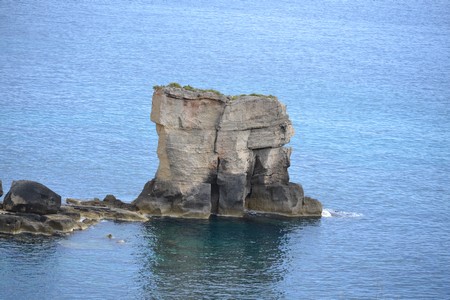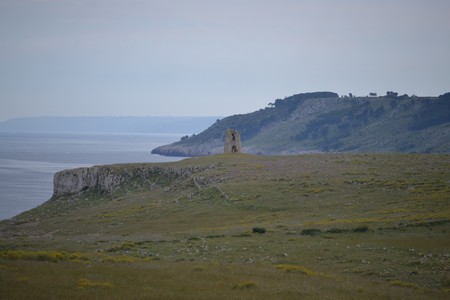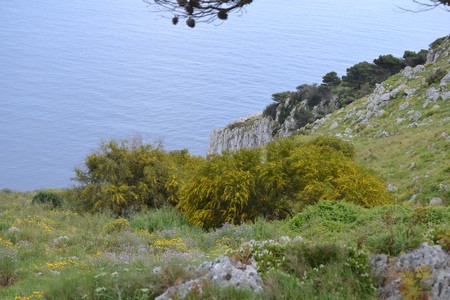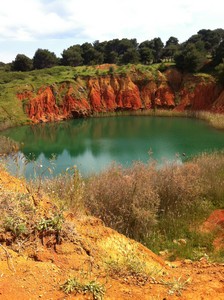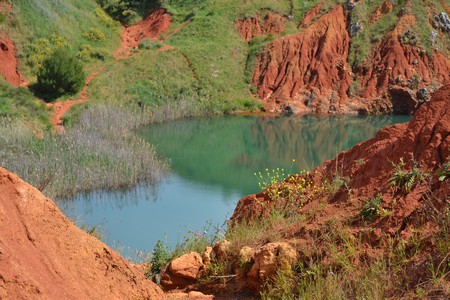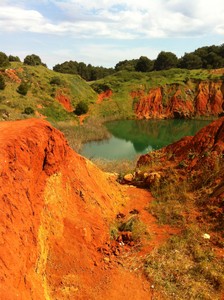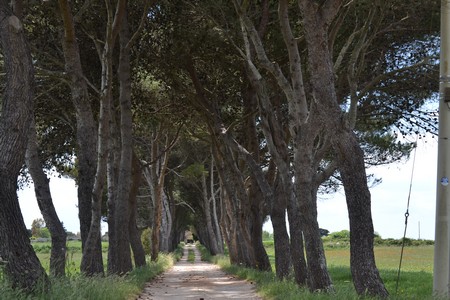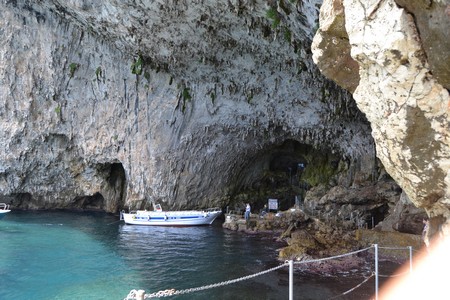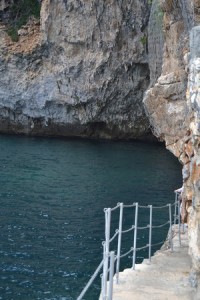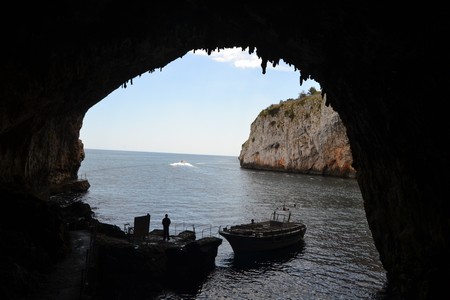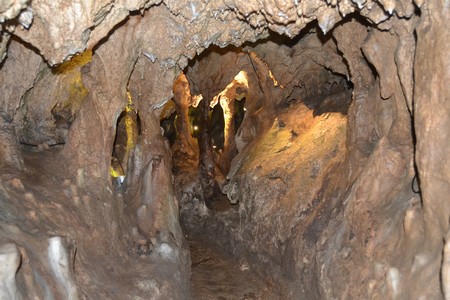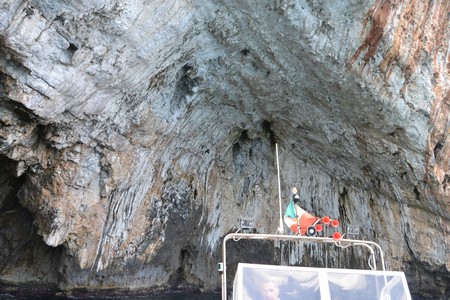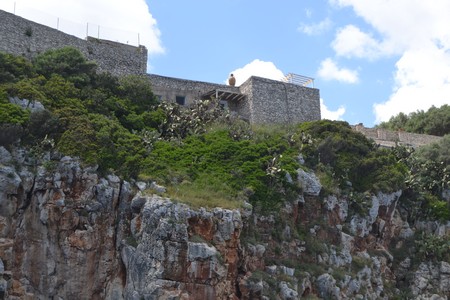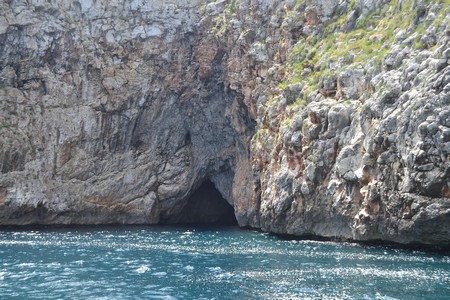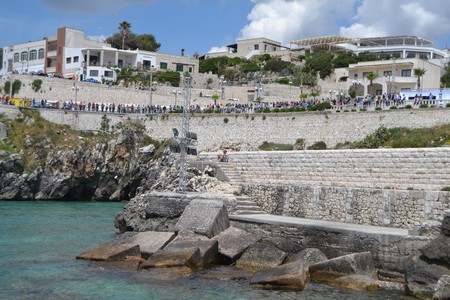There are roads that are not measured in kilometers, but in emotions. Strips of asphalt that offer picturesque scenery, embracing the mountains and hills or along cliffs overlooking the sea. Among these one of the streets symbol of the extreme Heel of Italy is the main road from Otranto to Castro in Salento. A road runs high above the sea and from which there are wonderful views and landscapes with the ever –present jagged line of the Balkan coast at the horizon.
Witnesses of the history that has “invested” this land are the coastal towers. Between Otranto and Castro there are about six. First you encounter the Torre del Serpe, the symbol of Otranto. It is a cylindrical tower of which only a high face has survived, dazzling white at certain times of day. Further along is the Torre delle Orte, a truncated pyramid structure wide and low resembling to a fort.
Taking up the coast, Torre Sant’Emiliano appears on the horizon, from the truncated cone base, dominating one of the most beautiful stretches of the Adriatic coast. The road, then, leads to Porto Badisco and Santa Cesarea, places defended by Torre Minervino, Torre Specchia di Guardia, Torre Santa Cesarea and the impressive Torre Miggiano with a truncated conical base, with a bull string course and upper body with machicolations and loopholes. They were erected by Carlo V after the Sack of Otranto by the Turks. Their task was to create a sighting “cordon”. In fact they are placed at distances such that they can communicate each other through smoke by day and fire by night, the danger coming from the sea.
Otranto is the most eastern city of Italy but its charm is completed by its bastions on the sea, the castle and cathedral, with one of the most beautiful mosaic floors in the world. Inside the cathedral there is also the Chapel of the 800 Martyrs, reminding the sad story of the invasion and the massacre of the inhabitants of Otranto, then called “idruntini”, by the Turks of Mohammed II.
Towards Punta Palascìa, the gem not to be missed is the Cava of Bauxite: an emerald set in the red clay! The green water collecting at the bottom is due to the presence of the mineral and is intensified by the vermilion cliffs on which grows a dense vegetation that acts as a backdrop to the lake that has formed in the trench, creating a lake ecosystem in which several species of amphibians have found their natural habitat.
Proceeding south to Castro, an old fishing village located on the coast with its sentry castle and that for years has been a favorite destination to Queen Paola of Belgium, the road follows the curves of the rugged coastline between steep cliffs to the sea and the pine forests from the land side. Among the most beautiful harbors Porto Badisco, a deep bay that according to the legend was the landing of Aeneas when he fled from Troy in flames. Here the stop is a must to admire the view and taste the sea urchins on the terrace of the bar of Carlo De Paola (via Litoranea Porto-Badisco Otranto, tel. +39 0836 911608; from 8.30 to 24, always open) where the fisherman Grazio opens them on request. A suggestion: reserve them in advance or you will be left empty -handed and remember that from May 1 to June 30, you will not find any of the biological rest.
Near Porto Badisco at a short distance from the fortified farm of Cippano are the ruins of the Abbey of San Nicola di Casole to which you are taken by a long avenue of trees. The Abbey was for the late-Byzantine Mediterranean an important center of cultural production. Its activity stopped abruptly at the end of ‘400 in conjunction with the martyrdom of Otranto. Today, what is considered the Cluny of Puglia, is now reduced to accommodate a chicken coop where scratching fowls, unaware, as the owners of this place beacon of culture in the past, to live in such a prestigious house.
Then it comes Santa Cesarea Terme, the main thermal baths of Puglia, characterized by its villas and colorful and big houses, modern hotels and spas using various mineral springs suitable for the treatment of diseases of the skin, resulting in four caves along the high cliffs. A little further there are sea caves famous for signs of prehistoric life, such as the Grotta Romanelli that is closed to the public. Do not miss a visit to the Grotta della Zinzulusa, from the word Zinzuli , the dialect name of the stalactites resembling to hanging rags that decorate the inside cavity that goes underground through the Hall of Wonders and the end called the Duomo. The cave is also populated by a rich marine life, especially shellfish that live exclusively here.
Before returning to the car, we recommend to take advantage of the boats of Fernando Capraro anchored at the entrance of Zinzulusa and take a boat trip to see the caves Palombara and Azzurra opening in the rocks of the coast overlooking the sea (cost of the excursion € 5 per person).
The road then continues taking to the picturesque bay of Castro Marina: here the story says that Aeneas has really arrived here. Meanwhile from 22 to 24 of last May landed the teams of the World Aquabike UIM-APB GP Italy, coming from fifteen countries around the world, for the second run competitions of the world championship. They have impressed with their evolutions the large number of people who for three days joyfully crowded the small village.
(Traduzione di Monia Saponaro)



